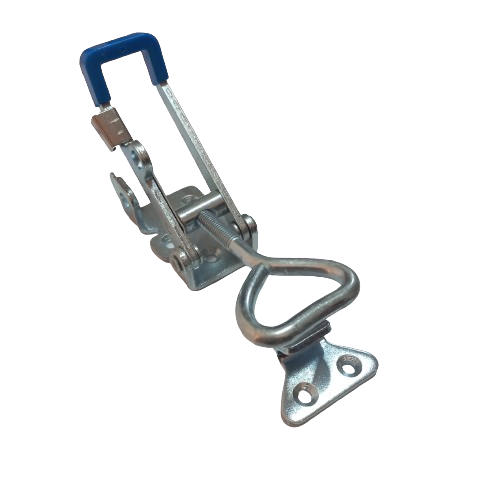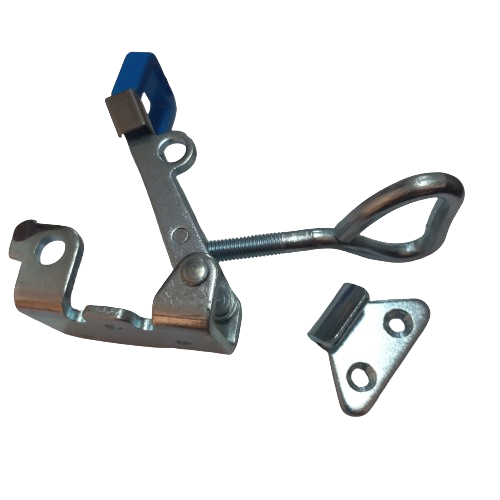











أنشئ متجرك الإلكتروني على منصة إلكترا خلال دقائق وابدأ البيع من أي مكان.
✨ سجّل مجانًا الآنمقالات
The Bugatti Veyron is a mid-engined sports car, designed and developed in France by the Volkswagen Group and Bugatti, and manufactured in Molsheim, France, by the French automobile manufacturer Bugatti. Named after racing driver Pierre Veyron.
The original version of the car had a top speed of 407 km/h (253 mph). Named “Car of the Decade” and “Best Car (2000-2009)) by the BBC’s Top Gear TV show, the standard design of the Bugatti Veyron was named Best Driving Car in 2005 by Top Gear. gear.
The Super Sport version of the Veyron is one of the fastest cars in the world, with a top speed of 431.072 km/h (267.856 mph). The Grand Sport Vitesse version is the fastest two-seater convertible in the world, with an average top speed of 408.84 km/h (254.04 mph) in a test run on April 6, 2013.
In December 2010, Bugatti began giving buyers the ability to choose exterior and interior colors using a computer program (application) offered on the company's official website. Production of the Bugatti was discontinued in late 2014, but production of special edition models continued through 2015.
Volkswagen chief Ferdinand Piech announced production of the Veyron at the Geneva Motor Show]] 2000]]. It was promised to be the fastest, most powerful and most expensive car in history. Instead of using the W18 engine, the production model uses a VR6/WR8-style W16 engine. First observed in 1999, the Bentley concept car with a W16 four-turbocharged engine producing 1,001 hp, a top speed of 407 km/h (253 mph), and a price tag of €1 million pounds.
I continued throughout 2001 to upgrade the Bugatti Veyron concept chassis until late 2001 and Bugatti announced the car under the name "Bugatti Veyron 16.4", as it would enter production in 2003.
However, the car experienced major problems during development. It was hard to achieve the required stability at high speed - one of the prototypes was destroyed in an accident at Monterey Historics, and at the Mazda Raceway at Laguna Seca. A production delay delegation from the Veyron awaited resolution of these and other issues.
Piëch retired that year as chairman of the Volkswagen Group and was replaced by Bernd Pischetsrieder. The new boss immediately sent the Veyron into the hands of experts for cardinal modifications. Neumann Neumann was also replaced by new chief Thomas Bscher in December 2003, and major modifications have been made to the Veyron under the guidance of the company's former engineer, Bugatti's engineering chief Wolfgang Schreiber.
Each Veyron sells for €1,100,000 (net price excluding taxes), prices, exchange rates and local taxes (such as VAT) vary. UK or US prices are more than 800,000 pounds sterling, or about $1,600,000.777
On 10 September 2007 a special edition of the Veyron named Thoroughbreds was unveiled in Frankfurt. The only difference from the look of the original Veyron is the final bodywork: the Pur Sang clearly lacks aluminum and carbon fiber trim. Power Sang production will be limited to five cars. The car will feature high-gloss aluminum wheels.
At the Geneva Motor Show]] In 2008, Bugatti announced a partnership with the French fashion house Hermes Hermes. Among the features of this partnership are several new features, as well as a redesign of the front end of the car, with attention to interior detailing done at Hermes using premium leather for the bags, seats and the rest of the car's interior. Bugatti later made four new color schemes available for the Veyron. It will also come with recommended luggage.
The Sang Noir was inspired by the Bugatti Type 57 Atlantic. The exterior details are painted black, including the fuel filler and headlights, while the rear end, side mirror housings, and chrome roof rails are also painted. Also, the central part of the body is made of carbon fiber reinforced polymer. The interior is painted in bright orange with black. Only 15 cars of this model were produced.
Bugatti announced the production of a larger version of the Targa, called the Grand Sport. It was scheduled to start production in the spring of 2009. This version comes with two types of roofs. The first type comes from transparent and hard polycarbonate, and the roof is movable. The second type took its design from umbrella designs, and the model (umbrella roof) is inspired by the old classic images of Bugatti racers with manual umbrellas that they were holding. It can reach 252 mph with a fixed roof, 224 mph with a soft top, and is limited to 81 mph with a temporary roof (which is shaped like an umbrella).
Four air-chargers (turbocharged) with a W16-cylinder engine used by Bugatti in the Veyron.
Veyron's W16, 8.0 liter engine with 4 turbochargers
The Veyron featured a W16-cylinder engine, or the equivalent of two V8 engines. Each cylinder contains 4 valves for a total of 64 valves, with two camshafts and only 4 cylinder banks. The engine is fed by four turbochargers and has a volume of 8.0 liters (7,993 cc/488 cc) with a square of 86 mm (3.4 in) by 86 mm (3.4 in).
Putting that power into practice is a real-time dual-shift separator between the computer-controlled 7-speed manual gearbox and the transmission behind the wheel with over 150 millisecond shift response, designed and built by Ricciardo of England. The Veyron can be driven fully with an automatic transmission. The Veyron is also equipped with all-wheel drive based on the Haldex traction system. Specially designed Michelin tires are used to accommodate the vehicle's maximum speed. Estimated curb weight is 1,888 kg (4,160 lb). This gives the car a weight-to-power ratio advantage over the 529 bhp/tonne engine.
The car's wheelbase measures 2,710 mm (106.7 in). Overall length is 4,462 mm (175.7 in). It is 1998 mm (78.7 in) wide and 1204 mm (47.4 in) high.
Veyron's Hydraulic Radiators ((Heat Exchangers))
Bugatti Veyron has a total of 10 radiators.
3 radiators for the engine cooling system.
1 Air-to-liquid intercooler heat exchanger.
2 for the air conditioning system.
1 transmission oil cooler.
1 oil radiator.
1 engine oil radiator.
1 hydraulic oil radiator for the wing.
It has a drag coefficient of 0.36 and a frontal area of 2.07 square metres, with an 8.0-litre W16 engine with 4 turbochargers.
energy
According to Volkswagen (and with TÜV Süddeutschland approval) the final engine was produced producing 1001 (736 kW/987 hp) and 1,250 N m (920 ft lbf) of torque.
Top speed was initially set to be 407 km/h (253 mph) but test versions were unstable at that speed, forcing a new aerodynamic design. In May, 2005, a prototype Veyron was tested at the Volkswagen test track near Wolfsburg in Germany and recorded a top speed of 400 km/h (249 mph). In October 2005, driver magazine editor Csaba Csere drove the car in a test drive of the final production version of the Veyron in November 2005. This test, at Volkswagen's Ehra-Lessien test track, reached a top speed of 407.5 km/h (253.2 mph). the hour). The top speed was achieved again by Top Gear host James May again on Volkswagen's test track, when the car reached 407.9 km/h (253.5 mph), which equates to precisely 1/3 of the speed of sound. at sea level. When we approach the highest speed during the test, James May says that "the tires will not last more than fifteen minutes, but he adds that there is no problem because the fuel ends in twelve minutes." It also gives an indication of power needs, when driving at 250 km/h (155 mph) it uses approximately 270 to 280 bhp (200 to 210 kW), but for a top speed of 407 km/h (407 km/h) 253 mph) requires more power from the engine.
The latest test was conducted recently, according to the National Geographic Channel, where it reached a speed of 430 km per hour, which is the highest speed the car has reached.
The Veyron has the most acceleration of any production car to date, reaching 60 mph (97 km/h) in 2.46 seconds. It reaches 100 km/h (62 mph) in about 2.5 seconds, which equates to an average acceleration of about 1.18 g. And it is greatly facilitated in achieving the admiration of this car due to the presence of the four-wheel drive system that helps in the transfer of large amounts of this energy in the initial stages of acceleration.
It can reach 200 and 300 km/h (124 and 186 mph) in 7.4 and 16.7 seconds, respectively. According to a report in the February 2007 issue of Road & Track magazine, it covered the quarter mile in 10.2 seconds at a speed of 142.9 miles (230.0 km/h).
The Veyron consumes more fuel than any other accomplished car, using 40.4 L/100 km (6.99 mpg imp/5.82 mpg US) for city driving and 24.1 L/100 km (11.7 mpg imp). 9.76 mpg US) on the combined cycle [citation needed]. At its maximum power, it consumes more than 115 L/100 km (2.46 mpg/2.05 US gal), with a 100-liter (22 imp gal/26 US gal) fuel tank that consumes fuel in 12 minutes. And only 46 seconds. It has the most powerful engine ever.
Abdullah Tiger
kw:
ettore
founded
automobiles
divo
owners
apr
ultra
apr
expensive
hypercar
jul
jan
mar
bugatti's
01024076008